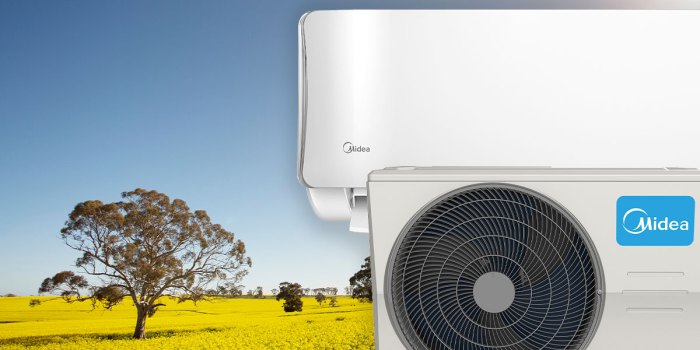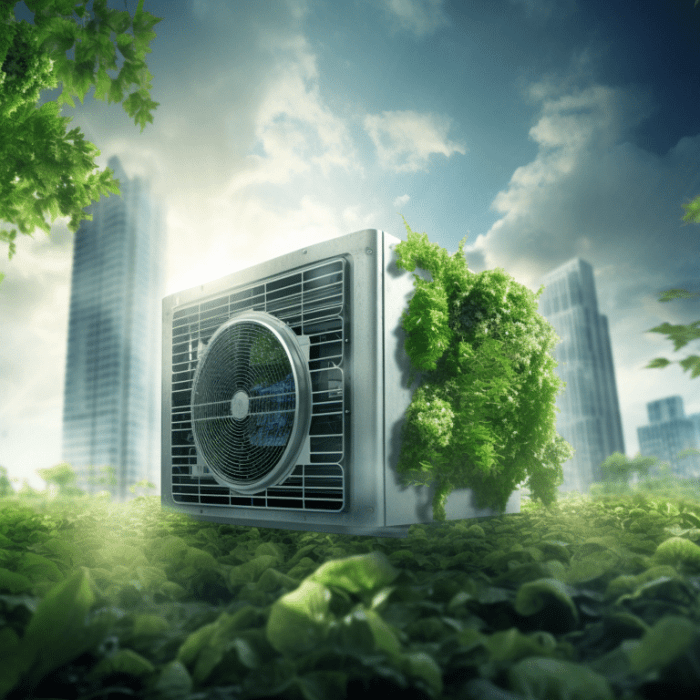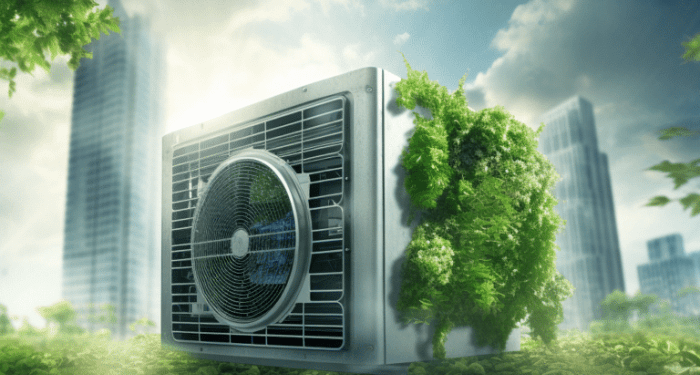Embark on a journey towards a more sustainable future with Eco-Friendly Airconditioners for a Greener Planet. Discover how these innovative cooling systems are revolutionizing the way we think about energy efficiency and environmental impact.
Eco-Friendly Features of Air Conditioners
Modern air conditioners come with a variety of eco-friendly features that help reduce their environmental impact and promote sustainability.
These features include:
Energy Efficiency
- Energy-saving modes that adjust cooling levels based on the room temperature, reducing energy consumption.
- Programmable timers that allow users to schedule the operation of the air conditioner, optimizing energy use.
- High-efficiency filters that improve indoor air quality by capturing dust, pollen, and other particles.
- Use of eco-friendly refrigerants that have lower global warming potential compared to traditional refrigerants.
Contribution to a Greener Planet
Eco-friendly air conditioners play a crucial role in reducing greenhouse gas emissions and combating climate change. By consuming less energy and using environmentally friendly refrigerants, these air conditioners help minimize the carbon footprint associated with cooling our living spaces.
Comparison with Traditional Air Conditioners
When compared to traditional air conditioners, eco-friendly models are significantly more energy-efficient. They are designed to operate with minimal energy consumption, reducing electricity bills and environmental impact. Additionally, the use of eco-friendly refrigerants in these models prevents the release of harmful chemicals into the atmosphere, further contributing to a greener planet.
Energy Efficiency and Green Technology
Energy efficiency plays a crucial role in reducing the environmental impact of air conditioners. By using less energy, eco-friendly air conditioners help lower electricity consumption and decrease greenhouse gas emissions, contributing to a greener planet.
Latest Green Technologies in Eco-Friendly Air Conditioners
Modern eco-friendly air conditioners incorporate innovative green technologies to enhance energy efficiency and sustainability. These technologies include:
- Variable-speed compressors: These compressors adjust cooling output based on the temperature requirements, resulting in lower energy consumption.
- Smart thermostats: Smart thermostats optimize cooling settings and schedules, reducing energy waste and improving overall efficiency.
- Eco-friendly refrigerants: Environmentally friendly refrigerants such as R-32 and R-410A are used in eco-friendly air conditioners to minimize harm to the ozone layer and reduce carbon footprint.
- Sensor technology: Advanced sensors in eco-friendly air conditioners detect occupancy and adjust cooling levels accordingly, preventing energy wastage in unoccupied spaces.
Benefits of Energy-Efficient Air Conditioners in Reducing Carbon Footprint
Energy-efficient air conditioners offer several advantages in reducing carbon footprint:
- Lower energy consumption: Energy-efficient models consume less electricity, resulting in reduced carbon emissions from power plants.
- Extended lifespan: Energy-efficient air conditioners tend to have a longer lifespan, reducing the need for frequent replacements and associated carbon emissions from manufacturing new units.
- Improved indoor air quality: By operating more efficiently, eco-friendly air conditioners maintain optimal indoor air quality, promoting health and well-being while reducing the environmental impact.
Refrigerants and Environmental Impact

Refrigerants play a crucial role in air conditioners as they are responsible for absorbing and releasing heat to cool the air. However, certain refrigerants can have a significant impact on the environment, contributing to global warming and ozone depletion.
Comparison of Refrigerants
When comparing environmentally friendly refrigerants with traditional ones, the key factor to consider is their Global Warming Potential (GWP). GWP measures the heat trapped in the atmosphere by a greenhouse gas relative to carbon dioxide over a specific time frame.
Environmentally friendly refrigerants such as hydrofluorocarbons (HFCs) have lower GWPs compared to older refrigerants like chlorofluorocarbons (CFCs) and hydrochlorofluorocarbons (HCFCs). By using refrigerants with lower GWPs, air conditioners can help reduce their overall impact on global warming.
Regulations and Standards
The use of refrigerants in air conditioning systems is regulated by various standards and regulations to minimize their environmental impact. For example, the Montreal Protocol is an international agreement aimed at phasing out ozone-depleting substances, including many older refrigerants. Additionally, the Kigali Amendment to the Montreal Protocol focuses on reducing the use of high-GWP refrigerants to further protect the environment.
Maintenance and Longevity of Eco-Friendly Air Conditioners

Proper maintenance is crucial to ensure the optimal performance and longevity of eco-friendly air conditioners. By following a few simple practices, consumers can not only reduce their environmental impact but also prolong the lifespan of their eco-friendly cooling units.
Regular Cleaning and Filter Replacement
- Regularly clean the filters of the air conditioner to prevent dust and debris from clogging the system. Clogged filters can reduce efficiency and strain the unit, leading to potential breakdowns.
- Replace or clean the filters according to the manufacturer's recommendations to maintain good airflow and energy efficiency.
Professional Maintenance Checks
- Schedule regular maintenance checks with a professional technician to inspect the components, refrigerant levels, and overall condition of the air conditioner.
- Professional servicing can address any issues early on, preventing major breakdowns and ensuring the unit operates at peak performance.
Optimal Temperature Settings
- Avoid setting the thermostat too low during hot weather, as this can strain the system and increase energy consumption.
- Set the temperature to a comfortable level and use programmable thermostats to regulate cooling cycles efficiently.
Outdoor Unit Maintenance
- Keep the outdoor unit free from debris, vegetation, and obstructions to allow proper airflow and ventilation.
- Inspect the outdoor unit regularly for any signs of damage or wear, and address any issues promptly to prevent further damage.
Ultimate Conclusion
In conclusion, Eco-Friendly Airconditioners for a Greener Planet offer not just cooling comfort but also a significant step towards reducing our carbon footprint and preserving the environment for future generations. Embrace the eco-friendly revolution in air conditioning and make a positive impact today.
Questions and Answers
Are eco-friendly air conditioners more expensive than traditional models?
Eco-friendly air conditioners may have a higher upfront cost, but they result in long-term savings through energy efficiency and lower maintenance expenses.
Do eco-friendly air conditioners use different refrigerants than traditional ones?
Yes, eco-friendly models often use refrigerants with lower global warming potential compared to traditional ones, reducing environmental impact.
How can consumers increase the lifespan of their eco-friendly air conditioners?
Regular maintenance, such as cleaning filters and coils, ensuring proper installation, and timely repairs, can significantly extend the lifespan of eco-friendly air conditioners.




